Three on the Third is a monthly series in which we highlight three books new to the library collection. Summaries of the books will be provided along with shelf location and a link to the item in the catalog.
Jane Crow
by Rosalind Rosenberg
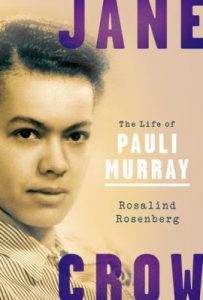 Throughout her prodigious life, activist and lawyer Pauli Murray systematically fought against all arbitrary distinctions in society, channeling her outrage at the discrimination she faced to make America a more democratic country. In this definitive biography, Rosalind Rosenberg offers a poignant portrait of a figure who played pivotal roles in both the modern civil rights and women’s movements. Murray accomplished all this while struggling with issues of identity. She believed from childhood she was male and tried unsuccessfully to persuade doctors to give her testosterone. While she would today be identified as transgender, during her lifetime no social movement existed to support this identity. She ultimately used her private feelings of being “in-between” to publicly contend that identities are not fixed, an idea that has powered campaigns for equal rights in the United States for the past half-century. Summary provided by publisher
Throughout her prodigious life, activist and lawyer Pauli Murray systematically fought against all arbitrary distinctions in society, channeling her outrage at the discrimination she faced to make America a more democratic country. In this definitive biography, Rosalind Rosenberg offers a poignant portrait of a figure who played pivotal roles in both the modern civil rights and women’s movements. Murray accomplished all this while struggling with issues of identity. She believed from childhood she was male and tried unsuccessfully to persuade doctors to give her testosterone. While she would today be identified as transgender, during her lifetime no social movement existed to support this identity. She ultimately used her private feelings of being “in-between” to publicly contend that identities are not fixed, an idea that has powered campaigns for equal rights in the United States for the past half-century. Summary provided by publisher
E 185.97 .M95 R67 2017
Jane Crow – Catalog Link
My Lai
by Howard Jones
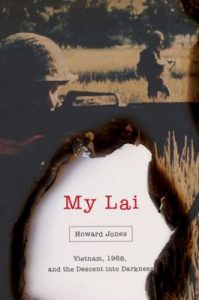 In this raw, searing new narrative account, Howard Jones reopens the case of My Lai by examining individual accounts of both victims and soldiers through extensive archival and original research. Jones evokes the horror of the event itself, the attempt to suppress it, as well as the response to Calley’s sentence and the seemingly unanswerable question of whether he had merely been following orders. My Lai also surveys how news of the slaughter intensified opposition to the Vietnam War by undermining any pretense of American moral superiority. Compelling, comprehensive, and sobering, Howard Jones’ My Lai chronicles how the strategic failures and competing objectives of American leaders resulted in one of the most devastating tragedies of the Vietnam War.
In this raw, searing new narrative account, Howard Jones reopens the case of My Lai by examining individual accounts of both victims and soldiers through extensive archival and original research. Jones evokes the horror of the event itself, the attempt to suppress it, as well as the response to Calley’s sentence and the seemingly unanswerable question of whether he had merely been following orders. My Lai also surveys how news of the slaughter intensified opposition to the Vietnam War by undermining any pretense of American moral superiority. Compelling, comprehensive, and sobering, Howard Jones’ My Lai chronicles how the strategic failures and competing objectives of American leaders resulted in one of the most devastating tragedies of the Vietnam War.
DS 557.8 .M9 J77 2017
My Lai – Catalog Link
The Blood of Emmett Till
by Timothy B. Tyson
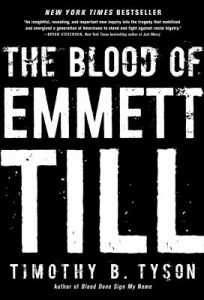 Part detective story, part political history, Timothy Tyson’s The Blood of Emmett Till revises the history of the Till case, not only changing the specifics that we thought we knew, but showing how the murder ignited the modern civil rights movement. Tyson uses a wide range of new sources, including the only interview ever given by Carolyn Bryant; the transcript of the murder trial, missing since 1955 and only recovered in 2005; and a recent FBI report on the case.
Part detective story, part political history, Timothy Tyson’s The Blood of Emmett Till revises the history of the Till case, not only changing the specifics that we thought we knew, but showing how the murder ignited the modern civil rights movement. Tyson uses a wide range of new sources, including the only interview ever given by Carolyn Bryant; the transcript of the murder trial, missing since 1955 and only recovered in 2005; and a recent FBI report on the case.
HV 6465 .M7 T97 2017
The Blood of Emmett Till – Catalog Link

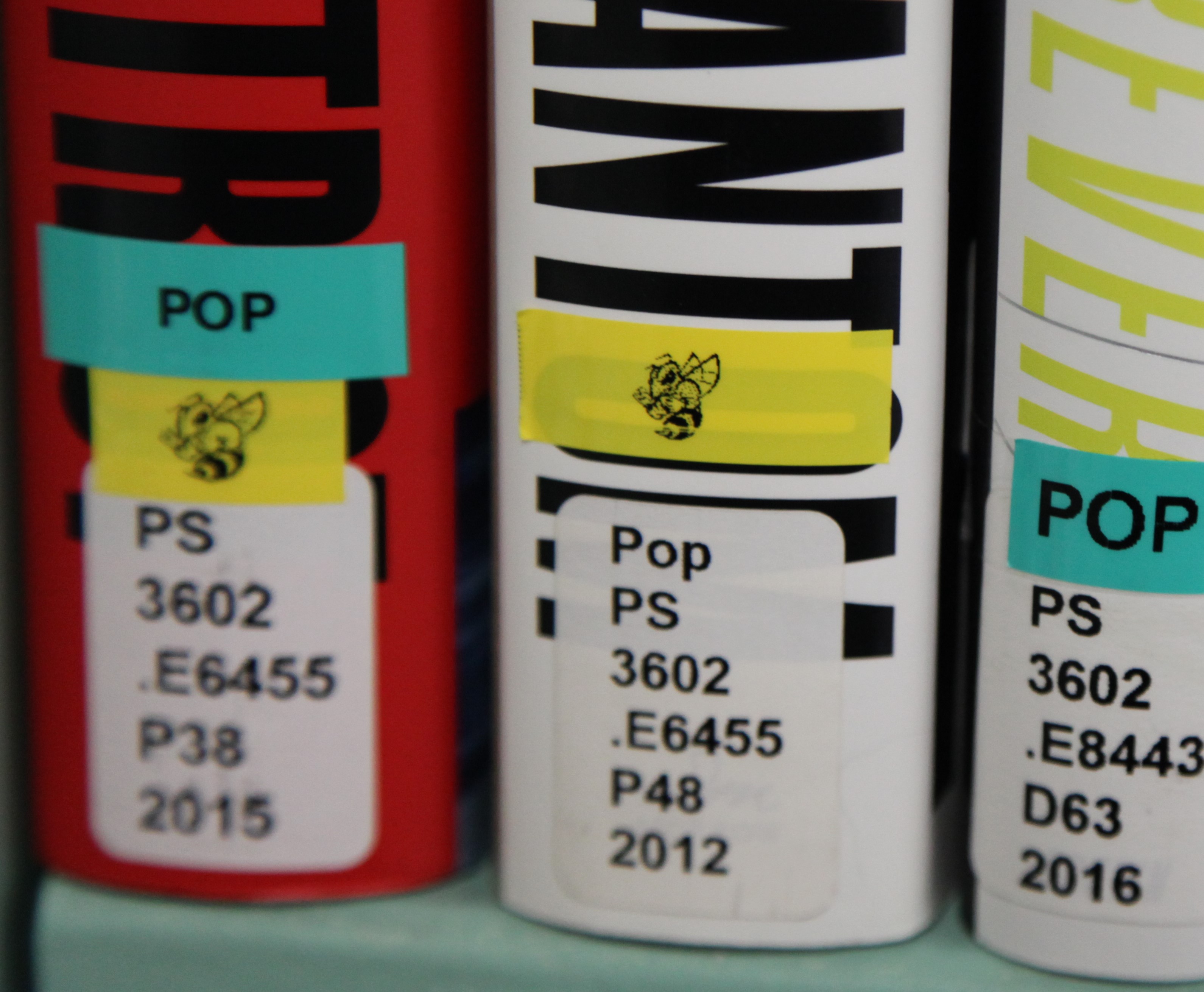 A yellow jacket sticker on the spines of books in the library indicates that the work was written by a member of the Randolph-Macon College community. The McGraw-Page Library has nearly 1000 works written by current and former R-MC students, faculty, and staff. Books by Randolph-Macon College writers are found in the College Archives and the Juvenile and Popular Reading collections, as well as in the circulating collection on the second floor.
A yellow jacket sticker on the spines of books in the library indicates that the work was written by a member of the Randolph-Macon College community. The McGraw-Page Library has nearly 1000 works written by current and former R-MC students, faculty, and staff. Books by Randolph-Macon College writers are found in the College Archives and the Juvenile and Popular Reading collections, as well as in the circulating collection on the second floor.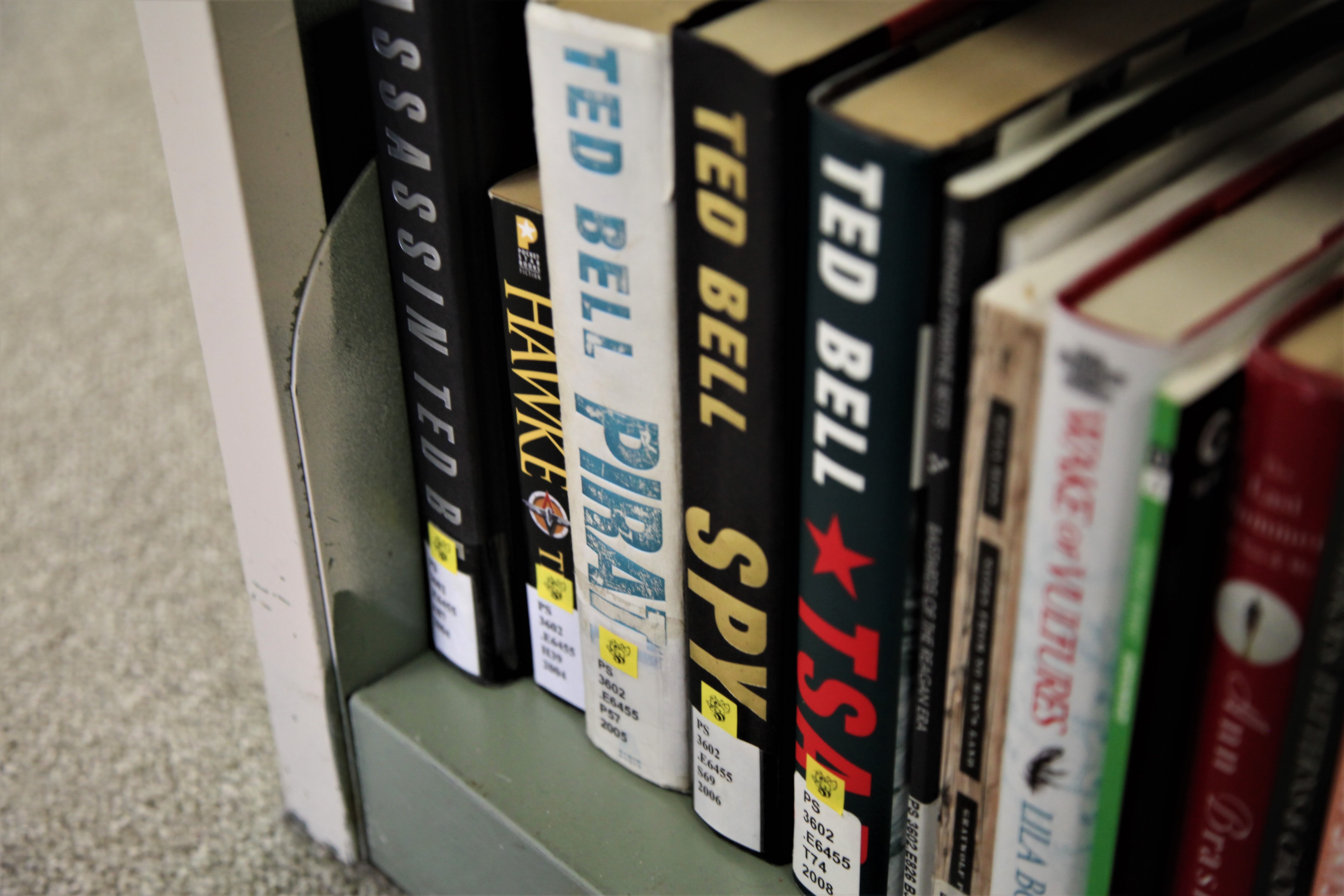
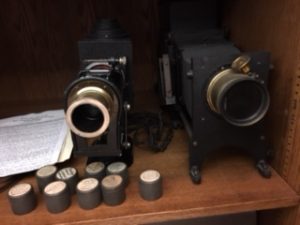
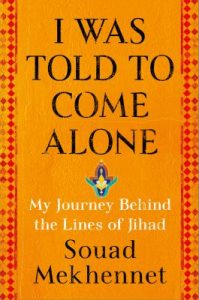 The journalist who broke the “Jihadi John” story draws on her personal experience to bridge the gap between the Muslim world and the West and explain the rise of Islamic radicalism. Souad Mekhennet has lived her entire life between worlds. The daughter of a Turkish mother and a Moroccan father, she was born and educated in Germany and has worked for several American newspapers. Since the 9/11 attacks she has reported stories among the most dangerous members of her religion. When she is told to come alone to an interview, she never knows what awaits at her destination. In this book, Mekhennet seeks to answer the question, “What is in the minds of these young jihadists, and how can we understand and defuse it?” She has unique and exclusive access into the world of jihad and sometimes her reporting has put her life in danger. We accompany her from Germany to the heart of the Muslim world — from the Middle East to North Africa, from Sunni Pakistan to Shia Iran, and the Turkish/ Syrian border region where ISIS is a daily presence. She then returns to Europe, first in London, where she uncovers the identity of the notorious ISIS executioner “Jihadi John,” and then in Paris and Brussels, where terror has come to the heart of Western civilization. Too often we find ourselves unable to see the human stories behind the headlines, and so Mekhennet — with a foot in many different camps — is the ideal guide to take us where no Western reporter can go.
The journalist who broke the “Jihadi John” story draws on her personal experience to bridge the gap between the Muslim world and the West and explain the rise of Islamic radicalism. Souad Mekhennet has lived her entire life between worlds. The daughter of a Turkish mother and a Moroccan father, she was born and educated in Germany and has worked for several American newspapers. Since the 9/11 attacks she has reported stories among the most dangerous members of her religion. When she is told to come alone to an interview, she never knows what awaits at her destination. In this book, Mekhennet seeks to answer the question, “What is in the minds of these young jihadists, and how can we understand and defuse it?” She has unique and exclusive access into the world of jihad and sometimes her reporting has put her life in danger. We accompany her from Germany to the heart of the Muslim world — from the Middle East to North Africa, from Sunni Pakistan to Shia Iran, and the Turkish/ Syrian border region where ISIS is a daily presence. She then returns to Europe, first in London, where she uncovers the identity of the notorious ISIS executioner “Jihadi John,” and then in Paris and Brussels, where terror has come to the heart of Western civilization. Too often we find ourselves unable to see the human stories behind the headlines, and so Mekhennet — with a foot in many different camps — is the ideal guide to take us where no Western reporter can go.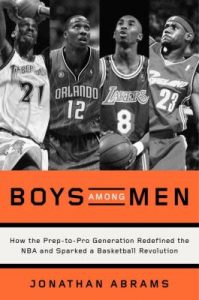 When Kevin Garnett shocked the world by announcing that he would not be attending college — as young basketball prodigies were expected to do — but instead enter the 1995 NBA draft directly from high school, he blazed a trail for a generation of teenage basketball players to head straight for the pros. That trend would continue until the NBA instituted an age limit in 2005, requiring all players to attend college or another developmental program for at least one year. Over that decade-plus period, the list of players who made that difficult leap includes some of the most celebrated players of the modern era — Garnett, Kobe Bryant, LeBron James, Dwight Howard, Tracy McGrady, and numerous other stars. It also includes notable “busts” who either physically or mentally proved unable to handle the transition. But for better or for worse, the face of the NBA was forever changed by the prep-to-pro generation.
When Kevin Garnett shocked the world by announcing that he would not be attending college — as young basketball prodigies were expected to do — but instead enter the 1995 NBA draft directly from high school, he blazed a trail for a generation of teenage basketball players to head straight for the pros. That trend would continue until the NBA instituted an age limit in 2005, requiring all players to attend college or another developmental program for at least one year. Over that decade-plus period, the list of players who made that difficult leap includes some of the most celebrated players of the modern era — Garnett, Kobe Bryant, LeBron James, Dwight Howard, Tracy McGrady, and numerous other stars. It also includes notable “busts” who either physically or mentally proved unable to handle the transition. But for better or for worse, the face of the NBA was forever changed by the prep-to-pro generation.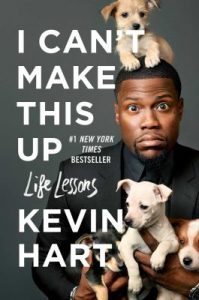 Actor and comedian Kevin Hart grew up in North Philadelphia. His father was a drug addict who was in and out of jail. His brother was a crack dealer and petty thief. And his mother was overwhelmingly strict, beating him with belts, frying pans, and his own toys. In his literary debut, he takes the reader on a journey through what his life was, what it is today, and how he’s overcome each challenge to become the man he is today. Hart sees life as a collection of chapters that each person gets to write for himself or herself. “Not only do you get to choose how you interpret each chapter, but your interpretation writes the next chapter,” he says. “So why not choose the interpretation that serves your life the best?”
Actor and comedian Kevin Hart grew up in North Philadelphia. His father was a drug addict who was in and out of jail. His brother was a crack dealer and petty thief. And his mother was overwhelmingly strict, beating him with belts, frying pans, and his own toys. In his literary debut, he takes the reader on a journey through what his life was, what it is today, and how he’s overcome each challenge to become the man he is today. Hart sees life as a collection of chapters that each person gets to write for himself or herself. “Not only do you get to choose how you interpret each chapter, but your interpretation writes the next chapter,” he says. “So why not choose the interpretation that serves your life the best?” is a database of over 800 great, reliable reference sources. Covering all subject areas, over 3.5 million articles in reference books and sets are full text searchable in
is a database of over 800 great, reliable reference sources. Covering all subject areas, over 3.5 million articles in reference books and sets are full text searchable in 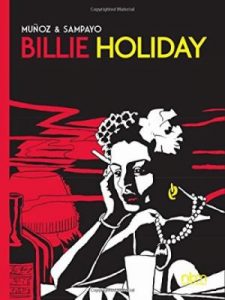
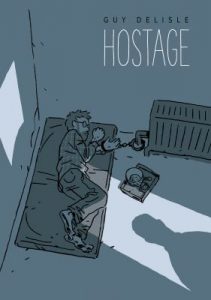
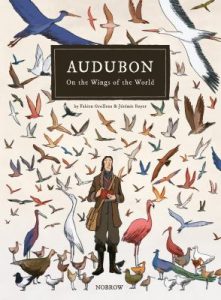
 Poppies of Iraq is Brigitte Findakly’s nuanced tender chronicle of her relationship with her homeland Iraq, co-written and drawn by her husband, the acclaimed cartoonist Lewis Trondheim. In spare and elegant detail, they share memories of her middle class childhood touching on cultural practices, the education system, Saddam Hussein’s state control, and her family’s history as Orthodox Christians in the arab world. Poppies of Iraq is intimate and wide-ranging; the story of how one can become separated from one’s homeland and still feel intimately connected yet ultimately estranged. Signs of an oppressive regime permeate a seemingly normal life: magazines arrive edited by customs; the color red is banned after the execution of General Kassim; Baathist militiamen are publicly hanged and school kids are bussed past them to bear witness. As conditions in Mosul worsen over her childhood, Brigitte’s father is always hopeful that life in Iraq will return to being secular and prosperous. The family eventually feels compelled to move to Paris, however, where Brigitte finds herself not quite belonging to either culture. Trondheim brings to life Findakly’s memories to create a poignant family portrait that covers loss, tragedy, love, and the loneliness of exile.
Poppies of Iraq is Brigitte Findakly’s nuanced tender chronicle of her relationship with her homeland Iraq, co-written and drawn by her husband, the acclaimed cartoonist Lewis Trondheim. In spare and elegant detail, they share memories of her middle class childhood touching on cultural practices, the education system, Saddam Hussein’s state control, and her family’s history as Orthodox Christians in the arab world. Poppies of Iraq is intimate and wide-ranging; the story of how one can become separated from one’s homeland and still feel intimately connected yet ultimately estranged. Signs of an oppressive regime permeate a seemingly normal life: magazines arrive edited by customs; the color red is banned after the execution of General Kassim; Baathist militiamen are publicly hanged and school kids are bussed past them to bear witness. As conditions in Mosul worsen over her childhood, Brigitte’s father is always hopeful that life in Iraq will return to being secular and prosperous. The family eventually feels compelled to move to Paris, however, where Brigitte finds herself not quite belonging to either culture. Trondheim brings to life Findakly’s memories to create a poignant family portrait that covers loss, tragedy, love, and the loneliness of exile.